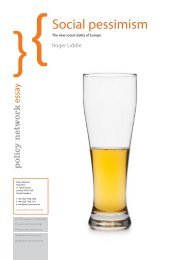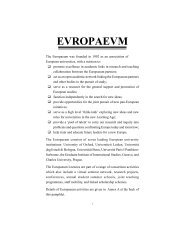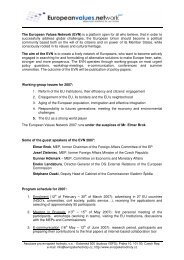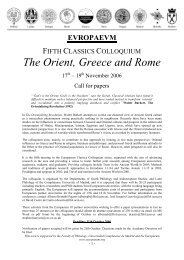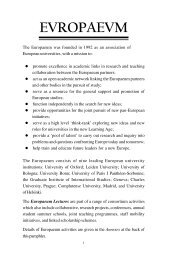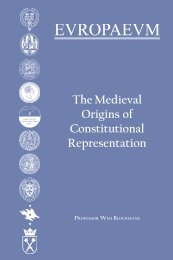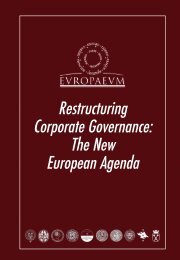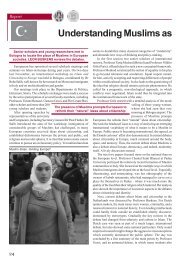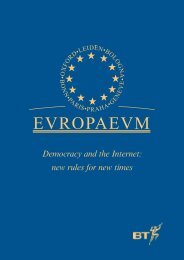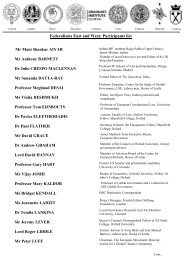Authors Iain Begg | Gabriel Glöckler | Anke Hassel ... - The Europaeum
Authors Iain Begg | Gabriel Glöckler | Anke Hassel ... - The Europaeum
Authors Iain Begg | Gabriel Glöckler | Anke Hassel ... - The Europaeum
Create successful ePaper yourself
Turn your PDF publications into a flip-book with our unique Google optimized e-Paper software.
particular, “Through the Open Method of Coordination the Commission<br />
will help to facilitate the modernisation and restructuring of education<br />
systems so that they provide the necessary competences to foster<br />
innovation”. 25<br />
<strong>The</strong>re are two ways to interpret this objective. A first interpretation would<br />
suggest that the Commission is arguing that the education systems within<br />
the EU should keep pace with the rapid technological changes that the<br />
world is experiencing, particular in the ITC sector. If this is the case, it<br />
is unclear what value added the EU could play apart from dispensing<br />
common sense to national policymakers, for example by calling for schools<br />
to be provided with computers. On the other hand, if this programme is<br />
suggesting that each member state should aim at endowing the population<br />
with the same kinds of skills, then this directly clashes with the logic of the<br />
VoC, and is likely to result in very little policy learning at all.<br />
As recalled earlier, patterns of innovations are one of the key aspects<br />
of divergence between LMEs and CMEs. This is not to say that one has<br />
more innovation capacity. Rather, because of their different institutional<br />
configurations, LMEs tend to favour radical innovation in products and<br />
processes, while less dynamic CMEs develop innovation patterns that<br />
express themselves in marginal, but steady, increments. 26<br />
To offer stylised EU-focused evidence to corroborate this story, Figure<br />
1 compares four EU countries: Germany and the UK are archetypal<br />
Coordinated Market and Liberal Market Economies respectively. Denmark<br />
and Sweden are more intermediate cases, with the former leaning towards<br />
the LME cluster, and the latter towards the CME cluster. <strong>The</strong>se countries<br />
are the overall EU leaders in innovation (together with Finland), 27 and<br />
therefore they represent the model that other less dynamic countries<br />
should emulate.<br />
<strong>The</strong> bars in each graph show the industrial sectors in which those countries<br />
hold a strong comparative advantage. <strong>The</strong> bars identify the category<br />
of goods that are leaders in export performance within each country<br />
vis-à-vis all the other countries in the world. 28 <strong>The</strong> widest difference in<br />
comparative advantage is between Germany and the UK. <strong>The</strong>y share a<br />
strong comparative advantage only in one category, i.e. power generating<br />
machinery and equipment (SITC 71), in which arguably both radical leaps<br />
of innovations and incremental small-scale improvements are likely to play<br />
a role. For the rest, Germany specialises in the production of goods such<br />
as metalworking machinery (SITC code 73), general industrial machinery<br />
Chapter 8 – Dermot Hodson and Marco Simoni 123



